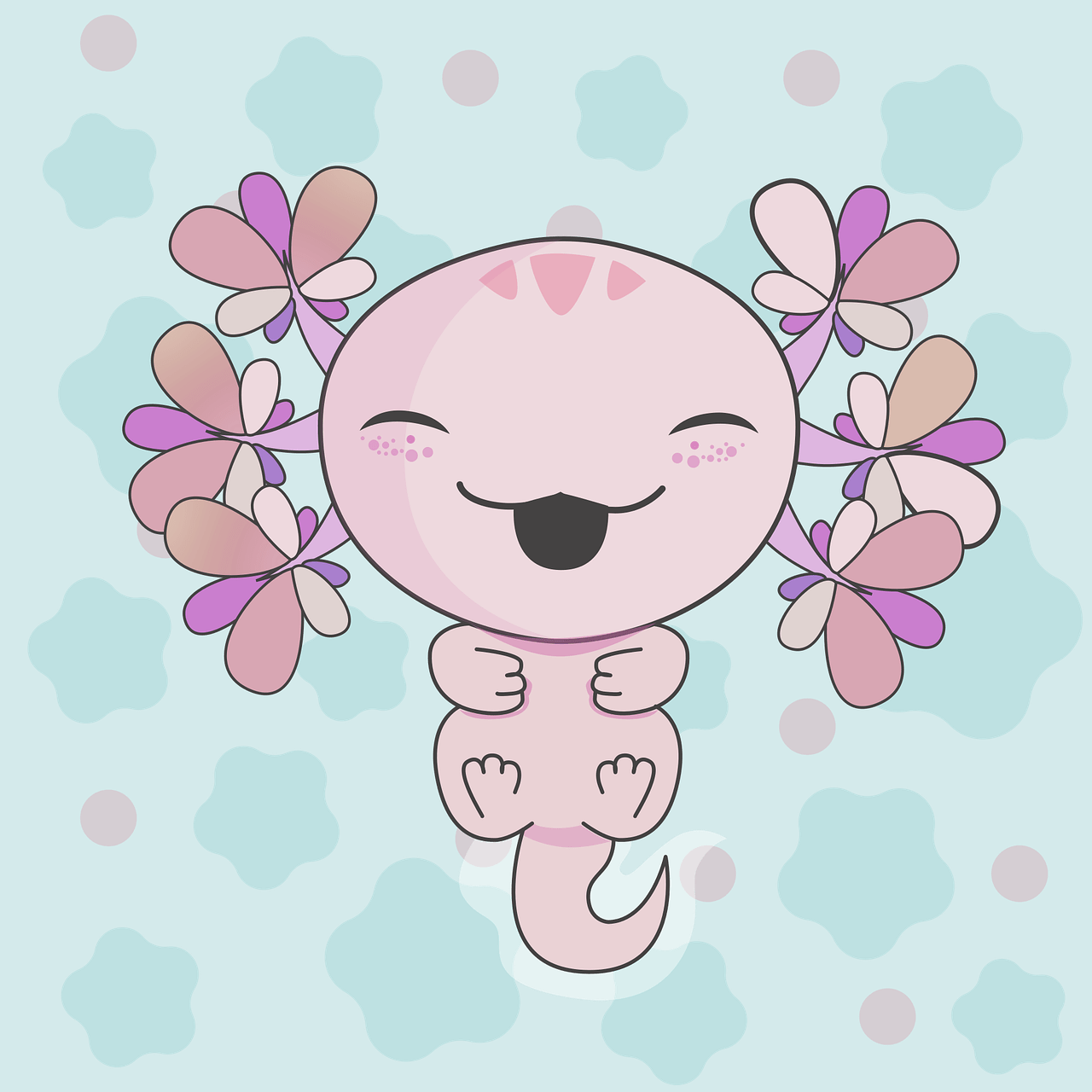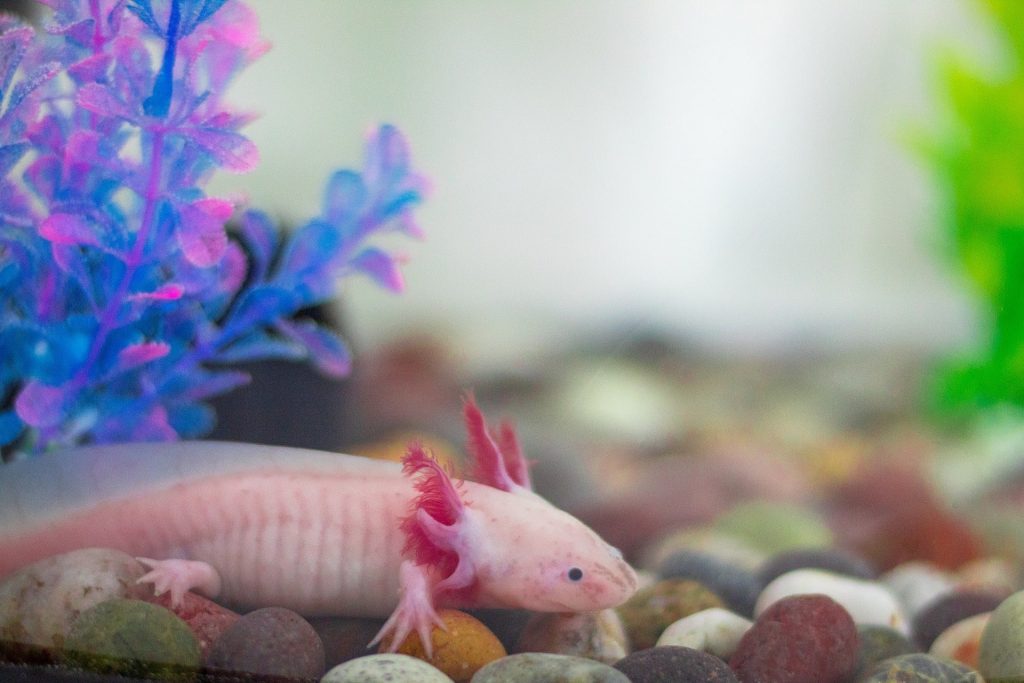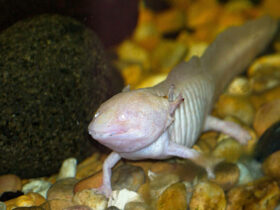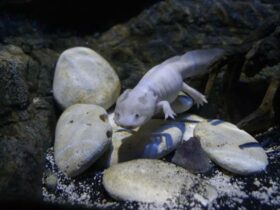
Contents
Do Axolotls Need A Heater? – Introduction

So you’ve decided to take the plunge into axolotl ownership – congrats! These adorable amphibians make for fascinating pets. But with their exotic nature comes some uncertainty about proper care. One of the big questions new axolotl owners face is whether or not to use an aquarium heater.
Axolotls are native to the cool lakes of Mexico City, so do they even need extra warmth? You’ve probably heard mixed messages on this, and the truth is, it depends. Axolotls can survive in a range of temperatures, but there is an ideal zone for maximizing their health and activity. Before you make a decision that could affect your new pet’s wellbeing, get the full scoop on axolotl heating requirements. The answer may surprise you.
Axolotl Tank Water Temperature Talk: https://m.youtube.com/watch?v=4yjJ0uWagMw&pp=ygUaRG8gQXhvbG90bHMgTmVlZCBBIEhlYXRlcj8%3D
Do Axolotls Need a Heater? The Short Answer
In short, no – axolotls are cold-blooded animals and prefer water temperatures on the cooler side. They can actually become stressed or even suffer health issues in water that’s too warm.
Axolotls originate from mountain lakes in Mexico, where temperatures are typically pretty chilly. Their ideal water temperature range is between 60 to 68°F or 15 to 20°C. Any warmer than 72°F or 22°C, and your axolotl may become lethargic, lose their appetite, or even develop fungal infections.
- Provide a chiller or cooling fan instead of a heater. This will keep the water temperature in the proper range during warm summer months.
- Place the aquarium in a spot that doesn’t receive direct sunlight. Keeping the aquarium out of sunlight will help prevent overheating.
- Perform regular partial water changes with water that’s the same temperature as the aquarium water. Replacing about 25% of the water every week will keep conditions fresh without shocking your axolotl with temperature changes.
- Monitor the water temperature regularly, especially in hot weather. Use an aquarium thermometer to make sure temperatures stay in the ideal range. If needed, you can also add ice or cooling packs to help bring the temperature down.
While axolotls can tolerate short-term temperature drops into the 50s°F or 10°C, they should never be exposed to high heat over long periods. Providing the proper cool water environment is key to keeping your axolotl healthy and happy. If temperatures do spike, be sure to gradually bring them back down to the ideal range. With the right conditions, your axolotl can live 15-25 years, so taking steps to regulate water temperature is well worth the effort!
Axolotl Habitat Conditions: Temperature Requirements
Axolotls are native to lakes and canals in Mexico, so they prefer their habitat cool. In captivity, axolotl aquariums should be maintained at 60-68°F. Temperature
Axolotls are cold-blooded, so they rely on their environment to regulate body temperature. Fluctuating or warm temperatures can stress your axolotl and weaken their immune system.
- To keep temperatures stable, place the aquarium in a spot away from vents, heaters, and direct sunlight. A room temperature spot is ideal.
- If needed, you can use an aquarium chiller or cooling fan to lower the temperature. Only use aquarium heaters as a last resort, since overheating is more dangerous than slight cooling.
- Use a high-quality aquarium thermometer to monitor temperature, and perform frequent water changes with water that’s within a few degrees of the target temperature.
While some sources claim axolotls can tolerate slightly warmer temperatures, especially for short periods, it’s best to aim for the lower end of their range. Axolotls become more active and feed better in cooler water, so keeping temperatures on the lower side will support your axolotl’s health and happiness.
Providing the proper habitat conditions, especially the right temperature range, is key to keeping your axolotl thriving. With the right setup and consistent care, your axolotl can live 10-15 years or more. Keeping their home cool will help ensure they stay with you for the long haul.
Why Axolotls Prefer Cool Water
Axolotls are native to the cool, oxygenated lakes of Mexico City, so they prefer temperatures on the cooler side. Their ideal temperature range is between 60 to 68°F. Warmer water temperatures can stress out your axolotl and make them more prone to disease.
Axolotls are Cold-Blooded
Axolotls are amphibians, so they are cold-blooded animals. This means they rely on the temperature of their environment to regulate their own body temperature. In cooler water, axolotls are more active and have a healthy appetite. Warmer temperatures will cause them to become lethargic and not eat as much.
Lower Metabolism in Warm Water
When an axolotl’s environment is too warm, their metabolism speeds up. This causes them to breathe more heavily, swim less often, and eat more food in order to fuel their increased metabolism. The increased eating, combined with less activity, can lead to obesity and other health issues in axolotls.
The ideal temperature for keeping axolotls is between 60 to 68°F or 15 to 20°C. Temperatures higher than 72°F (22°C) for an extended period of time can become deadly. Using aquarium chillers, fans, frozen bottles, and partial water changes are some ways to help keep your axolotl’s water temperature in the ideal range.
Signs of Overheating
How can you tell if your axolotl’s water is too warm? Some signs of overheating in axolotls include:
- Rapid breathing or panting
- Swimming less or staying motionless for long periods
- Loss of appetite or eating less food
- Irritability or aggression
- Fungal or bacterial infections
If you notice any of these signs in your axolotl, test your water temperature immediately and take steps to gradually cool the water. Lowering the temperature by even a couple of degrees can make a big difference in your axolotl’s health and happiness.
The Dangers of Overheating Axolotls
Axolotls are native to cool, oxygenated lakes and streams, so overheating can be extremely dangerous for them. Their ideal temperature range is 60 to 68°F. If the water gets too warm, it holds less oxygen and can quickly become toxic.
Health Issues
High temperatures can make axolotls more prone to disease and illness. Warm water provides the perfect breeding ground for harmful bacteria and parasites that axolotls are usually resistant to in cooler temperatures. Overheating also stresses axolotls, weakening their immune system and making them more vulnerable to infections.
Signs your axolotl may be overheated include:
-Lethargy and lack of appetite. Axolotls become less active and eat less in warm water.
-Gasping at the surface. If the water lacks oxygen, axolotls will gulp air.
-Fungus. High heat and humidity lead to fungal infections, especially on the gills.
-Red spots. Overheating can cause hemorrhaging under the skin and red blisters.
What You Can Do
The best way to prevent overheating is to invest in aquarium cooling equipment like chillers, fans, and aquarium cooling pads. You should also:
-Perform regular partial water changes with cooler water, especially in warm summer months.
-Place frozen water bottles in the tank. As they melt, they cool and oxygenate the water. Remove them before they start floating to avoid injuring your axolotl.
-Run an air pump and air stones to increase surface agitation and oxygenation.
-Move the tank to a cooler spot away from heat vents and direct sunlight.
Keeping your axolotl’s environment at an appropriate temperature will help ensure your salamander friend stays happy and healthy for many years to come. Their ideal cool habitat is not too hot and not too cold, but just right.
FAQ: Do Axolotls Need a Heater?
Axolotls are native to cooler waters, so many new owners wonder if they need to provide a heater for their tank. The short answer is: usually not. Axolotls can do just fine without a heater, and actually prefer cooler temperatures.
What’s Their Ideal Temperature Range?
Axolotls thrive in temperatures from 60 to 68°F. Their metabolisms start to slow down in warmer water, and temperatures over 74°F can stress them out. If your house stays within this ideal range year-round, you likely don’t need a heater. However, if temperatures drop below 60°F, you’ll want to consider using an aquarium heater to keep your axolotl comfortable and active.
When Might You Need a Heater?
There are a few situations where a heater could be helpful:
- If you keep your axolotl in an unheated garage or basement, especially during winter.
- If overnight temperatures in your area frequently drop below 60°F.
- If you notice your axolotl becoming less active or eating less, it could indicate the water is too cold.
- When treating your axolotl for illness, as warmer water can help boost their immune system. Increase the temperature gradually, and consult an exotic vet.
When using a heater, choose one rated for your aquarium size and start with a lower temperature, around 64°F. Gradually increase it by no more than 2 degrees per day. Be very careful not to overheat the water, and always use a thermometer to monitor the temperature.
In Summary
Axolotls are most comfortable in cool water, but providing a heater can be useful in some situations or for certain purposes. If you do need to use a heater, take extra precautions to properly regulate the temperature and make any changes gradually. When in doubt, it’s best to keep your axolotl in water that’s slightly cool rather than too warm. Their health and activity level will let you know if any temperature adjustments need to be made.
Conclusion
So there you have it, the truth about axolotls and heaters. While these adorable salamanders can tolerate a range of water temperatures, they really thrive in cooler water. Their natural habitat is mountain lakes and streams, not tropical beaches! Unless your axolotl is showing signs of stress in colder water or you need to treat a medical issue, it’s best to avoid heating their tank.
Your axolotl will be happier, healthier, and live longer in water temperatures that match their natural environment. Save your money on expensive heaters and focus on keeping the water clean, filtered and the right pH instead. An axolotl’s ideal home is a cool, freshwater oasis. Who needs a beach vacation when you’ve got that!
More Links:
Is It OK To Touch Axolotl? A Guide to Handling Axolotls in ’23! : https://adoptanim.com/is-it-ok-to-touch-axolotl/
What Do Axolotls Drink? – Staying Hydrated: https://adoptanim.com/what-do-axolotls-drink/





Leave a Reply